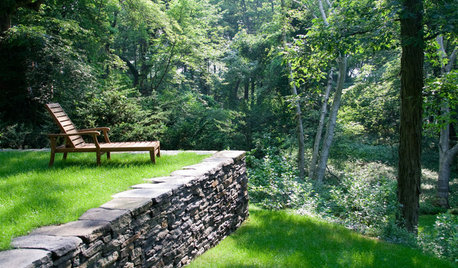New Lawn Help
gastonglock
9 years ago
Related Stories

GARDENING GUIDES8 Unthirsty Plants Help You Save Water in Style
Spend less effort and money on your landscape with drought-tolerant and native plants that liven up your yard
Full Story
EARTH DAYThe Case for Losing the Traditional Lawn
Work less, help the environment and foster connections by just saying no to typical turf
Full Story
GARDENING GUIDESHow to Plant a New Lawn From Sod
Take the quick-start route to turf with sod; these installation guidelines will help ensure a healthy and long-lasting lawn
Full Story
LANDSCAPE DESIGNHow to Help Your Home Fit Into the Landscape
Use color, texture and shape to create a smooth transition from home to garden
Full Story
LANDSCAPE DESIGNWhat the Heck Is a Ha-Ha, and How Can It Help Your Garden?
Take cues from a historical garden feature to create security and borders without compromising a view
Full Story
ORGANIZINGDo It for the Kids! A Few Routines Help a Home Run More Smoothly
Not a Naturally Organized person? These tips can help you tackle the onslaught of papers, meals, laundry — and even help you find your keys
Full Story
ARCHITECTUREHouse-Hunting Help: If You Could Pick Your Home Style ...
Love an open layout? Steer clear of Victorians. Hate stairs? Sidle up to a ranch. Whatever home you're looking for, this guide can help
Full Story
PETS6 Ways to Help Your Dog and Landscape Play Nicely Together
Keep your prized plantings intact and your dog happy too, with this wisdom from an expert gardener and dog guardian
Full Story
STANDARD MEASUREMENTSThe Right Dimensions for Your Porch
Depth, width, proportion and detailing all contribute to the comfort and functionality of this transitional space
Full StoryMore Discussions









yardtractor1
gastonglockOriginal Author
Related Professionals
Carlisle Landscape Architects & Landscape Designers · Bridgetown Landscape Architects & Landscape Designers · Deer Park Landscape Architects & Landscape Designers · Willowick Landscape Architects & Landscape Designers · Paradise Landscape Architects & Landscape Designers · Middletown Landscape Contractors · Brownsville Landscape Contractors · Cedar Hill Landscape Contractors · Cincinnati Landscape Contractors · Fruit Heights Landscape Contractors · Maywood Landscape Contractors · Mendota Heights Landscape Contractors · Middle River Landscape Contractors · Peachtree City Landscape Contractors · Montclair Swimming Pool BuildersgastonglockOriginal Author
andy10917
yardtractor1
gastonglockOriginal Author
yardtractor1
dchall_san_antonio